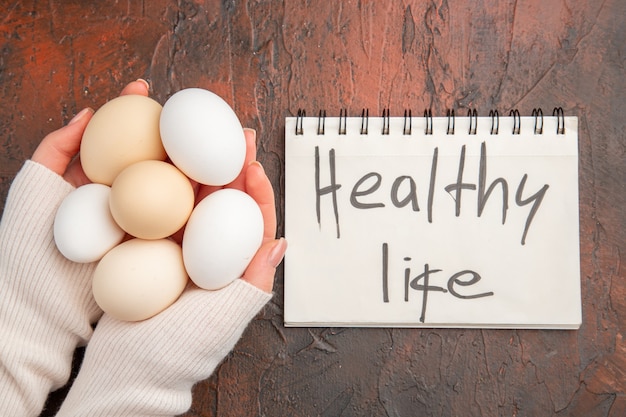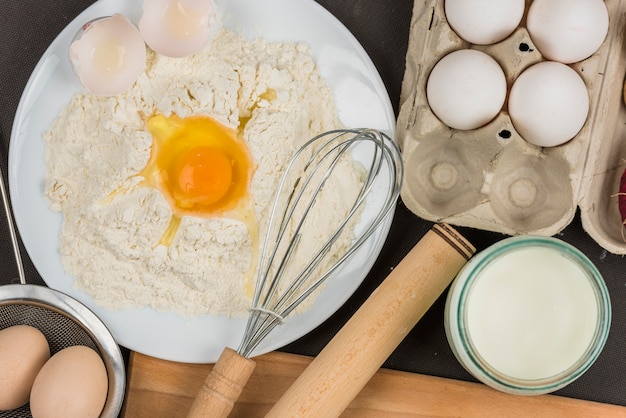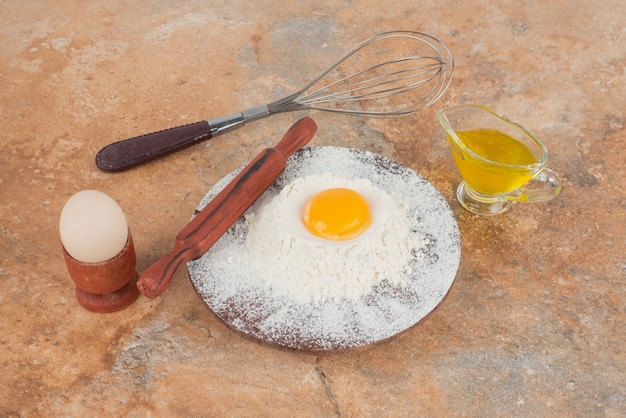(Part 1) The Hard-boiled egg: A Culinary Classic

Timing is Everything:
You've probably heard the old adage "time is of the essence", and it certainly holds true for cooking hard-boiled eggs. The secret to a perfectly set yolk and a smooth white lies in precise timing.
My go-to method is to cook for 10 minutes. This ensures a firm yolk without any hint of greening around the edges. That greenish hue is harmless, but it's a sign of overcooking, and frankly, it just doesn't look appealing.
However, sometimes you want a slightly softer yolk, maybe for egg salad or deviled eggs. In that case, 8 minutes is your magic number. It's a great option for dishes where a touch of creaminess is essential.
Beyond the Basic:
Now, let's get adventurous. There's a whole other world of hard-boiled eggs, a world of runny yolks and creamy textures. If you're craving a hard-boiled egg with a perfectly runny yolk, my advice is to cook for 6 minutes. The white will be set, but the yolk will be deliciously runny, perfect for dipping or drizzling with a little bit of olive oil and salt. It's a true culinary treat!
(Part 2) The soft-boiled egg: A Delicate Delight

Mastering the Art of Soft-Boiling:
Precision is key when it comes to soft-boiled eggs. For that perfect balance of runny yolk and set white, aim for a cooking time of 3-4 minutes. It's a narrow window, but trust me, the results are worth it.
Want to explore a slightly firmer texture? Try a "jammy" egg. This is where the yolk is runny, and the white has a slightly firmer texture. Cook for 5-6 minutes for that ideal "jammy" texture.
Don't Forget the Dipping Sauce:
A soft-boiled egg deserves a good dipping sauce. My personal favorite is a simple mix of butter, salt, and black pepper. But feel free to get creative! Chopped chives, a sprinkle of paprika, a dollop of mayonnaise – the possibilities are endless.
(Part 3) The Poached Egg: A Culinary Masterpiece

The Poaching Process:
Poaching an egg might seem intimidating, but it's surprisingly easy once you get the hang of it. Here's my foolproof method: Bring a pan of water to a simmer. Add a splash of vinegar; it helps the egg white coagulate and keeps it from spreading too much. Crack an egg into a small bowl and gently slide it into the water. Let it cook for 3-4 minutes, until the white is set and the yolk is still runny. Carefully remove the egg with a slotted spoon and enjoy!
For perfect poaching, follow these tips:
- Use fresh, cold eggs. The white will hold its shape better.
- Swirl the water slightly to create a vortex before adding the egg. This will help keep the egg white together.
- Don't overcrowd the pan. Give each egg plenty of room to cook evenly.
(Part 4) The Scrambled Egg: A Breakfast Classic
scrambled eggs are the ultimate comfort food. They're quick, easy, and incredibly versatile. But there's a right way and a wrong way to scramble an egg. You want a fluffy, creamy texture, not a rubbery, overcooked mess.The Secrets to perfect scrambled eggs:
The key to amazing scrambled eggs is low heat. This allows the eggs to cook slowly and evenly, resulting in that creamy texture we all crave. Here's my tried-and-true method: Crack a couple of eggs into a bowl and whisk them together with a splash of milk or cream, a pinch of salt, and a sprinkle of black pepper. Heat a pan over low heat and add a knob of butter. Pour in the egg mixture and gently stir with a spatula, making sure to scrape the bottom of the pan to prevent sticking. Cook for 2-3 minutes, until the eggs are just set but still slightly wet. Remove from the heat and serve immediately.
For extra richness, add a dollop of butter or a sprinkle of cheese at the end.
(Part 5) The Fried Egg: A Golden Icon
Fried eggs are the ultimate brunch staple, a perfect way to top off a plate of bacon and toast. But achieving that perfect runny yolk with a crispy golden edge takes practice.The Art of Frying an Egg:
Here's my technique: Heat a pan over medium heat and add a knob of butter. Crack an egg into a small bowl and gently slide it into the pan. Cook for 2-3 minutes, until the white is set and the yolk is still runny. Carefully flip the egg over and cook for 30 seconds, just long enough to crisp up the underside. Remove from the heat and serve immediately.
A few tips for perfect fried eggs:
- Use a non-stick pan to prevent sticking.
- Don't overcrowd the pan. Give each egg plenty of room to cook evenly.
- If you want a runny yolk, cook for a shorter time. If you prefer a firmer yolk, cook for a longer time.
(Part 6) The Omelette: A Culinary Canvas
Omelettes are a blank canvas for creativity. You can stuff them with anything from veggies and cheese to ham and mushrooms. But the foundation of a good omelette is a perfectly cooked egg base.Folding Technique:
Here's the secret to a light and fluffy omelette: whisk two eggs with a splash of milk or cream, a pinch of salt, and a sprinkle of black pepper. Heat a nonstick pan over medium heat and add a knob of butter. Pour in the egg mixture and cook for 1-2 minutes, until the bottom is set but the top is still runny. Then, use a spatula to fold the omelette in half, tucking in any desired fillings. Cook for another 30 seconds, until the egg is cooked through. Slide the omelette onto a plate and serve immediately.
For extra fluffiness, whisk the eggs vigorously before cooking. You can also add a tablespoon of water to the egg mixture, which helps create steam and makes the omelette lighter.
(Part 7) Beyond the Basics: Egg Cooking Methods and Their Times
The world of egg cooking goes beyond the usual suspects. Here are a few other methods to explore:1. Baking:
Baked eggs are a great option for a hearty breakfast or brunch. Simply preheat your oven to 350°F (175°C). Grease a baking dish and crack a couple of eggs into it. Bake for 15-20 minutes, until the whites are set and the yolks are runny.
2. Steaming:
Steamed eggs are a light and delicate option. Place a steamer basket over a pot of boiling water. Crack an egg into a small bowl and pour it into the steamer basket. Steam for 3-4 minutes, until the white is set and the yolk is runny.
3. Microwaving:
Microwaving eggs can be a quick and convenient option, but be careful not to overcook them. Crack an egg into a microwave-safe bowl and cover it with a plate. Microwave on high for 30-45 seconds, until the white is set and the yolk is runny.
(Part 8) Egg Cooking Times: A Cheat Sheet
To recap, here's a handy cheat sheet of common egg cooking times:| Egg Cooking Method | Cooking Time | Result |
|---|---|---|
| Hard-Boiled | 10 minutes | Firm yolk, set white |
| Hard-Boiled (Soft Yolk) | 8 minutes | Slightly softer yolk, set white |
| Hard-Boiled (Runny Yolk) | 6 minutes | Runny yolk, set white |
| Soft-Boiled | 3-4 minutes | Runny yolk, set white |
| Soft-Boiled (Jammy) | 5-6 minutes | Runny yolk, slightly firmer white |
| Poached | 3-4 minutes | Set white, runny yolk |
| Scrambled | 2-3 minutes | Fluffy, creamy texture |
| Fried | 2-3 minutes | Crispy golden edge, runny yolk |
| Baked | 15-20 minutes | Set white, runny yolk |
| Steamed | 3-4 minutes | Set white, runny yolk |
| Microwaved | 30-45 seconds | Set white, runny yolk |
(Part 9) FAQs: Your Egg Cooking Queries Answered
1. What happens if I overcook an egg?
Overcooked eggs, especially hard-boiled ones, can be a real bummer. The texture becomes rubbery and dry, the yolk turns hard, and the white loses its tenderness. It's definitely not the ideal way to enjoy an egg!2. How do I know when an egg is done?
There are a few ways to check if an egg is cooked through. For hard-boiled eggs, gently poke the egg with a finger. If it feels firm, it's done. For poached eggs, the white should be set, and the yolk should be runny. For scrambled eggs, the eggs should be set but still slightly wet.3. Can I cook eggs in the shell?
Absolutely! In fact, cooking eggs in the shell is the traditional method for hard-boiled eggs.4. What's the best way to peel a hard-boiled egg?
To make peeling easier, add the eggs to cold water immediately after cooking. Then, gently tap the shell all over with a spoon. The shell should peel off easily. If you're having trouble, try rolling the egg on a countertop to crack the shell further.5. What are some creative ways to use eggs?
Eggs are incredibly versatile! They're not just for breakfast. You can use them in everything from savory dishes like omelettes and frittatas to sweet treats like cakes and custards. Don't be afraid to experiment with different flavors and textures!Everyone is watching

Corn on the Cob: The Ultimate Guide to Perfectly Cooked Ears
Healthy MealsAh, corn on the cob. Just the name evokes images of sunny days, barbecues, and that sweet, juicy flavour that ...

Scallops: The Ultimate Guide to Perfect Cooking
Healthy MealsAh, scallops. Those delicate, sweet, and utterly delicious morsels of the sea. They hold a special place in my...

Spaghetti Squash: The Ultimate Guide to Cooking and Serving
Healthy MealsRemember that time you saw spaghetti squash at the supermarket, looking all bumpy and strange, and thought, "W...

Salmon Cooking Times: Perfect Guide for Every Recipe
Healthy MealsLet me tell you, cooking salmon is an art form. It's all about getting that perfect balance: juicy and tender,...

Ham Cooking Time: How Long to Bake, Smoke, or Boil a Delicious Ham
Healthy MealsAh, ham. It's a classic, isn't it? A real crowd-pleaser, especially around holidays. And when done right, it'...
